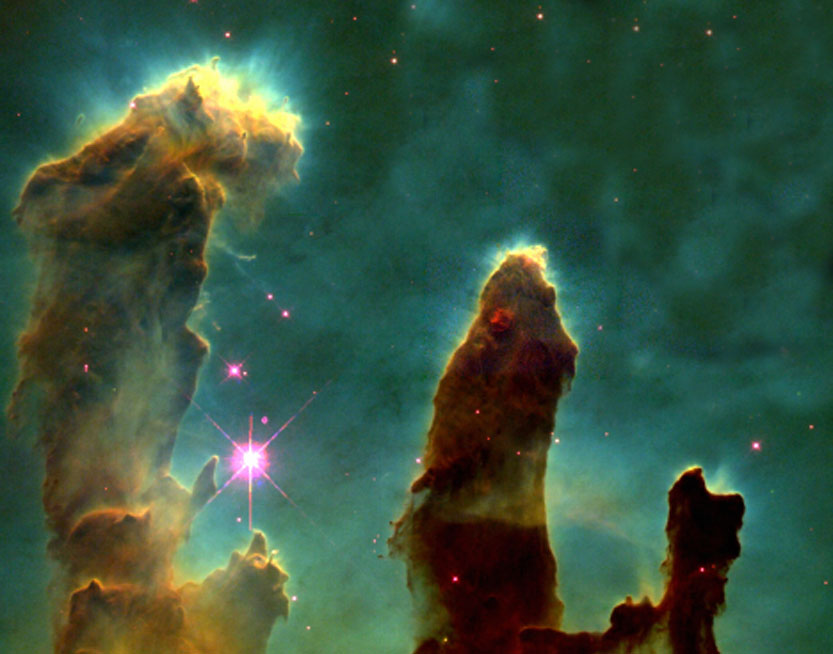Could the detection of methane on Mars be an indication of microbial life, or is a geologic process causing this chemical anomaly? Prior to 2003, no methane was observed in the Martian atmosphere, beginning on 2003 methane was detected using three ground-based infrared spectrometers. This Methane was then observed over a three year period (seven Earth years). The largest plumes were observed during the summer months, the largest contained approximately 19000 metric tons of methane.
The Martian atmosphere is composed of 95% carbon dioxide, 2.7% nitrogen, .07% carbon monoxide, .13% oxygen, 1.6% argon, and trace amounts of water vapor. Small amounts of methane may be produced due to atmospheric processes but would be relatively short lived due to the ionization of the compound, caused by UV radiation. Therefore any large amounts of methane present in the atmosphere would have to be the result of the release of a subsurface reservoir. The origin of such methane reservoirs is unknown, but could be due to biologic or natural processes.
If 90% of Earth’s methane is produced by life forms, could the methane on Mars also be produced biologically? Extremophiles could live deep below the surface of Mars where they could use hydrogen as an energy source; this energy could be produced when water exposed to radiation is dissociated into H2 and oxygen. This reaction also reduces carbon dioxide to methane, which could accumulate in subsurface reservoir s. If these reservoirs are connected to the surface along faults or fractures, seasonal variations could result in the opening of such cracks which could lead to the release of any methane accumulations. Extremophiles of this type can be found 3 km below the Witwatersrand Basin of South Africa.
Another possible source of the methane deposits could be of geologic origin. Such processes could include the production of magma, or the serpentinization of basalt. Either of these possibilities could also result in the buildup of subsurface methane deposits. Much like the extremophile scenario, these deposits could also be released due to the temperature variations that occur with seasonal changes.
The methane appears in highest concentrations at three regions: Arabia Terra, Nili Fossae, and the South-East corner of Syrtis Major. The Mars Reconnaissance Orbiter and Mars Express observed that the outcrops in the Nili Fossae region are rich in hydrated minerals. This suggests that this area resides above a magma chamber. The largest plume was observed over shield volcano located between Sytris Major and Nili Fossae. This further suggests that the area is above a magma chamber, and that the production of magma, or the serpentinization of basalt is responsible for the release of the methane plumes, and are probably not the result of the presents of Martian extremophiles.
